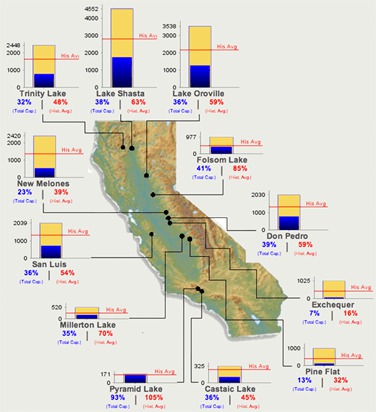Water: Time for a Fresh Look at What Works, What Doesn’t and What to Do About It For decades, California has been stuck in a Groundhog-Day-like water debate that pits fish and the environment against humans, farms and other water needs. Presented as a zero-sum game, we are told it is necessary for one set […]
Smart Policy- Real Solutions
California’s way of life is sustained by our flowing water. From farm fields and grocery store shelves, to city streets- moving water affects us all. Modern water management in the State focuses on two principles- moving water from places and times of abundance to places and times of need efficiently, and balancing the needs of […]
